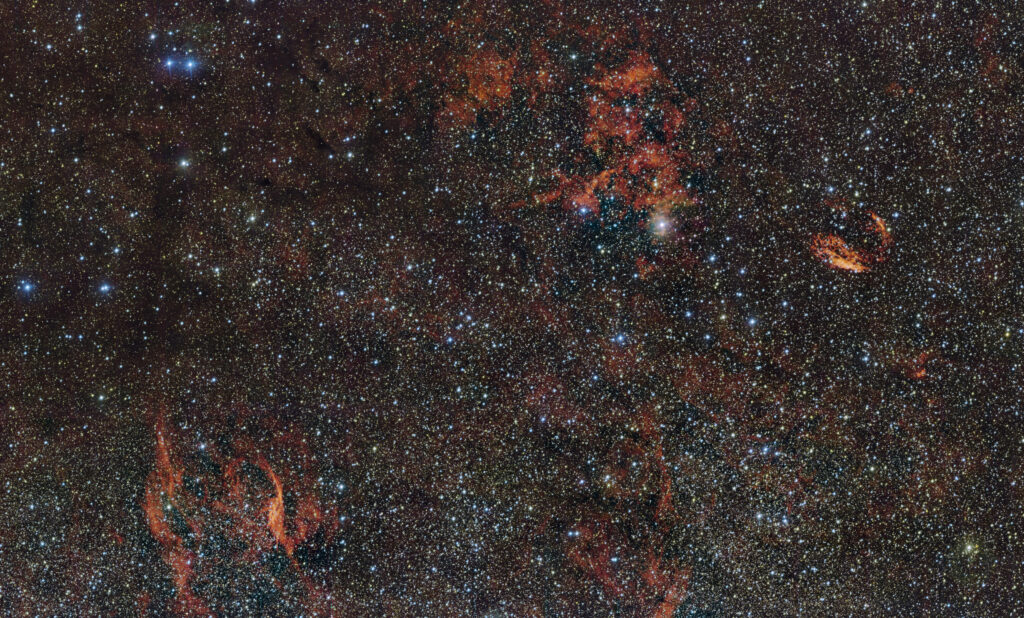Employees of the European Southern Observatory published an image taken by the VLT survey telescope. It shows the region of active star formation RCW 106.

RCW 106 is a large star-forming nebula located 4,000 light-years from Earth toward the constellation Puppis. It is part of a giant molecular cloud that measures 90 by 300 light-years and has a mass 100,000 times that of the Sun.
The glowing red clouds seen in the image show regions of dense gas. New stars are born in them. But in reality, only 1% of this gas is actually used to form luminaries — and astronomers don’t know why that percentage is so small.
Scientists know that the process of star formation begins when sections of these huge clouds of cold gas begin to thicken and, upon reaching a critical density, collapse to form new luminaries. But do even denser regions produce more stars, and can this explain the mystery of the 1%?
New results from the Atacama Pathfinder Experiment (APEX), accepted for publication in the journal Astronomy & Astrophysics, suggest that this is not the case. Denser regions are not more efficient in star formation. This may be because denser clouds fragment into filamentary structures and nuclei — but astronomers still have many questions to answer.
Earlier we told you about how Hubble photographed stellar gas bubbles in a neighboring galaxy.
According to ESO


